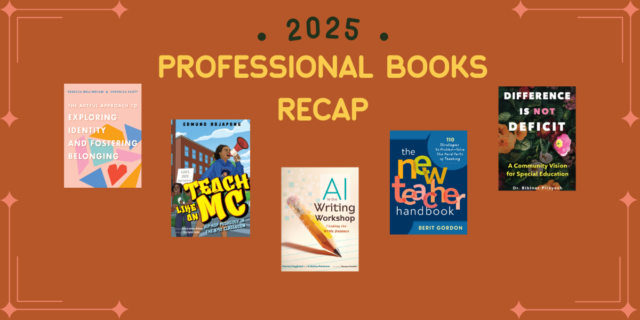
Every time a writer starts writing, they embark on a unique journey—one filled with contemplation, creativity, and the pleasure of storytelling. This journey, filled with challenges and discoveries, comprises distinct phases that authors often revisit.
From a seed of an idea to the final sharing of work, writers of all levels engage with and navigate through these stages. Each phase, though laid out in sequence, is adaptive, allowing writers the flexibility to adapt, revisit, or move forward as they craft their narratives.
Let’s explore the nuances of this writer’s journey.
The Four Pillars of the Writing Process

From The Writing Minilessons Book, Grade 5, ©2024 by Irene C. Fountas and Gay Su Pinnell
Planning and Rehearsing
- Starting the Draft: This is when writers start to put their ideas on paper. The writer’s notebook provides a space to experiment, practice new techniques, and hone their style.
- Developing the Idea: Some may proceed fluidly, adjusting as they write, while others might find drafting more challenging. Techniques like “discovery drafts” can help clarify the main message.
- Refining the Work: Revisions are vital. Drawing inspiration from various sources, students polish their work, making it more concise and cohesive. Collaborative revisions can foster creativity in the classroom.
Editing and Proofreading
- Polishing the Narrative: Editing and proofreading aren’t just about correcting errors; they’re about ensuring the narrative is as clear and impactful as possible. As writers review their work, they’re looking to maintain consistency in tone, tighten up their language, and ensure that their message stands out without being obscured by minor mistakes or ambiguities.
- Techniques and Tools: Introducing students to editing techniques can be a game-changer. Tools like “read aloud,” where writers vocalize their content to identify awkward phrasing, or “reverse reading,” where they read their work backward to spot spelling errors, can be invaluable.
- Balancing Self and Peer Editing: While self-editing fosters independence and personal responsibility, peer editing offers an external viewpoint, a fresh pair of eyes that might spot inconsistencies or areas of confusion. Teachers can encourage a blend of both, allowing students to first take charge of their narrative and then open it up for constructive feedback.
Publishing
- Methods of Sharing: Publishing is the culmination of the writer’s journey, a celebration of their efforts. Whether it’s incorporating book features, adding it to the classroom library, or sharing it digitally, publishing amplifies the writer’s voice and presents their work to an audience.
- Variety in Presentation: Publishing can range from crafting physical books to sharing a piece on a blog. The medium chosen reflects the writer’s intent and desired reach.
The Role of Choice
Genuine engagement in writing comes when students have autonomy over their work. Decisions about the topic, audience, form, or grammar details mean they aren’t just learning—they’re deeply involved in the process.
To truly support budding writers, we must champion these choices, equipping them with the necessary resources and freedom. Writing isn’t always a direct journey; it can involve backtracking, revisions, or advancements. Not every piece reaches the publishing stage, but each effort is valuable in developing the skill.
Minilessons: Micro-Tools for the Writing Journey
When it comes to teaching the writing process, the effectiveness of writing minilessons is unmatched. These bite-sized, targeted lessons equip young writers with specific techniques and strategies, allowing them to explore the vast terrain of the writing landscape in manageable increments.
Each minilesson helps shine a spotlight on a particular aspect of the writing journey, whether it’s crafting a strong lead, building tension, or employing vivid language. By breaking down the writing process into digestible chunks, minilessons help students understand and experiment with individual elements of writing—building their confidence and competence step by step.
♦ ♦ ♦ ♦
The writing process, while organized into stages, is interconnected. Each stage complements the others, serving as building blocks that enable young writers to tell their stories with precision and passion.
By understanding and valuing each writing process stage, you can guide students from initial ideas to completed works. Because as writing mentors, our goal isn’t just to teach writing—but to inspire a love for it.


